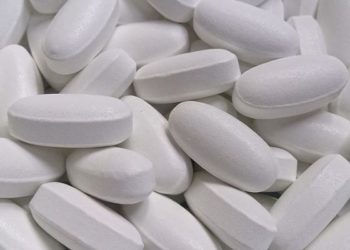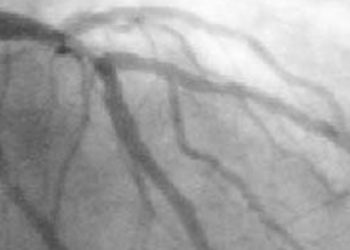2 Minute Medicine Rewind April 11, 2022
1. Ultrasound-guided corticosteroid and local anesthetic injection with advice and education was associated with reduced pain and improved function in patients with mild to moderate hip osteoarthritis compared with advice and education alone
Evidence Rating Level: 1 (Excellent)
Hip osteoarthritis is a leading cause of global disability. In the United Kingdom, total hip replacements are most commonly performed for osteoarthritis. Before surgical referral, patients with hip osteoarthritis are usually treated in primary care for several years, suggesting current medical management is suboptimal. Recommended analgesic options include paracetamol (acetaminophen), with intra-articular corticosteroid injection as an adjunct if pain is moderate to severe. However, the evidence supporting the use of intra-articular hip corticosteroid injection is limited and conflicting. In this randomized controlled trial, called the Hip Injection Trial (HIT), the clinical effectiveness of best current treatment (BCT) plus an ultrasound-guided intra-articular hip injection of triamcinolone and lidocaine or of lidocaine alone was compared with BCT. A total of 199 adults aged ≥40 years with hip osteoarthritis and at least a moderate level of pain were included in this study. Of these, 67 were randomly assigned to receive advice and education (BCT), 66 to BCT plus ultrasound-guided injection of triamcinolone and lidocaine, and 66 to BCT plus ultrasound-guided injection of lidocaine. The primary outcome was self-reported current intensity of hip pain on a scale of 1 to 10 over a six month period. The study sample included 113 (57%) women and the mean age of participants was 62.8 years (standard deviation 10.0). BCT plus ultrasound-triamcinolone-lidocaine had greater mean improvement in hip pain intensity over six months compared with BCT (mean difference −1.43 (95% confidence interval −2.15 to −0.72), P<0.001; standardized mean difference −0.55 (−0.82 to −0.27)). There was no significant difference in hip pain intensity over six months between BCT plus ultrasound-triamcinolone-lidocaine compared with BCT plus ultrasound-lidocaine (−0.52 (−1.21 to 0.18)). These findings suggest ultrasound-guided corticosteroid and local anesthetic injection with advice and education may reduce pain and improve function in patients with mild to moderate hip osteoarthritis compared with advice and education alone. This work will not only provide evidence to inform international guidelines, but will also give patients who believe their treatment choices are limited new options to consider.
1. COVID-19 was a risk factor for deep vein thrombosis, pulmonary embolism, and bleeding
Evidence Rating Level: 2 (Good)
The COVID-19 pandemic has led to a global health crisis. Symptoms range from mild to critical, with the most serious manifestation being pneumonia with acute respiratory distress syndrome (ARDS). Previous studies have identified COVID-19 as a risk factor for myocardial infarction and stroke. The risk of venous thromboembolism after COVID-19 is less clear. This case series and matched cohort study quantified the risk of deep vein thrombosis, pulmonary embolism, and bleeding after COVID-19. A total of 1,057,174 people who tested positive for SARS-CoV-2 between February 1, 2020 and May 25, 2021 were identified using national registries in Sweden. Statistics Sweden also found four people who tested negative (controls) for each participant who tested positive for SARS-CoV-2, matched on age, sex, and county of residence. The primary outcome measures were incidence rate ratio and risk ratio for first deep vein thrombosis, pulmonary embolism, or bleeding event. It was found that, compared with controls, incidence rate ratios were significantly increased 70 days after COVID-19 for deep vein thrombosis, 110 days for pulmonary embolism, and 60 days for bleeding. Incidence rate ratios during days 1-30 after COVID-19 were 5.90 (5.12 to 6.80) for deep vein thrombosis, 31.59 (27.99 to 35.63) for pulmonary embolism, and 2.48 (2.30 to 2.68) for bleeding. Similarly, the risk ratios during days 1-30 after COVID-19 were 4.98 (4.96 to 5.01) for deep vein thrombosis, 33.05 (32.8 to 33.3) for pulmonary embolism, and 1.88 (1.71 to 2.07) for bleeding. The rate ratios were highest during the first pandemic wave in Sweden compared with the second and third waves and highest in patients with critical COVID-19. These results suggest that COVID-19 is a risk factor for deep vein thrombosis, pulmonary embolism, and bleeding, which may impact recommendations for diagnostic and prophylactic strategies against venous thromboembolism after COVID-19.
Neurocognitive development in children at familial high risk of schizophrenia or bipolar disorder
1. Compared with matched controls, children at familial high risk (FHR) of bipolar disorder displayed no neurocognitive impairments, whereas those at FHR of schizophrenia demonstrated widespread neurocognitive impairments
Evidence Rating Level: 2 (Good)
Neurocognitive impairments are seen in children at familial high risk (FHR) of bipolar disorder and schizophrenia. Understanding of distinct neurodevelopmental pathways in these groups is limited. This prospective cohort study, called the Danish High Risk and Resilience Study, assessed the development in specific neurocognitive functions from age 7 to 11 in children at FHR of bipolar disorder and schizophrenia compared with children in a population-based control (PBC) group. Participants included 520 Danish children at FHR of bipolar disorder and schizophrenia along with a PBC group matched by age, sex, and municipality. Data was collected from January 1, 2013 to January 31, 2016 (Phase 1), and from March 1, 2017 to June 30, 2020 (Phase 2). Neurocognitive functioning was assessed with validated intelligence tests. There were a total of 103 children at FHR of bipolar disorder (mean [SD] age, 11.9 [0.2] years; 45 girls [43.7%]), 170 children at FHR of schizophrenia (mean [SD] age, 12.0 [0.3]; 81 girls [47.7%]), and 178 children in the PBC group (mean [SD] age, 11.9 [0.2] years; 82 girls [46.1%]). There were no statistically significant time versus group interactions across the 3 groups. Children at FHR of bipolar disorder and those in the PBC group did not differ significantly at 4 years. However, children at FHR of schizophrenia showed significant neurocognitive impairment in 7 of 24 neurocognitive measures (29.2%; Cohen d range, 0.29-0.37) compared with the PBC group at 4-year follow-up. Compared with children at FHR of bipolar disorder, children at FHR of schizophrenia had significant neurocognitive impairment in 5 of 24 measures (20.8%; Cohen d range, 0.29-0.38). These findings suggest that neurocognitive maturation was comparable across groups of children at FHR of bipolar disorder or schizophrenia compared with PBCs from age 7 to 11 years. Compared with the PBC group, children at FHR of bipolar disorder displayed no neurocognitive impairments, whereas those at FHR of schizophrenia demonstrated widespread neurocognitive impairments, possibly indicating distinct neurodevelopmental pathways underlying the two conditions.
1. A complete regimen of the CoronaVac vaccine was effective in preventing symptomatic COVID-19 and highly effective against severe illness in pregnant women in Brazil
Evidence Rating Level: 2 (Good)
More doses of CoronaVac, an inactivated virus vaccine, have been administered than any other COVID-19 vaccine, mainly in low- and middle-income countries. Some countries, like Brazil, offer CoronaVac to pregnant women. Physiological changes make pregnant women more susceptible to some infectious-related adverse outcomes. However, the effectiveness of COVID-19 inactivated vaccines in pregnant women is still unknown. This case-control study evaluated the vaccine effectiveness (VE) of the CoronaVac vaccine against symptomatic and severe COVID-19 in pregnant women in Brazil. All pregnant women aged 18-49 years with COVID-19-related symptoms from March 15, 2021 to October 3, 2021 in Brazil were identified. Records of test-positive cases were linked with notifications of severe, hospitalized, or fatal COVID-19. The adjusted odds ratio and VE against symptomatic and severe COVID-19 was determined by comparing vaccine status in test-positive symptomatic and severe cases to test-negative subjects. Of the 19,838 tested pregnant women, 7424 (37.4%) tested positive for COVID-19 and 588 (7.9%) had severe disease. Approximately 83% of pregnant women who received the first dose of CoronaVac completed the vaccination scheme. It was found that one dose of the CoronaVac vaccine was not effective at preventing symptomatic COVID-19. The effectiveness of two doses of CoronaVac was 41% (95% CI 27.1–52.2) against symptomatic COVID-19 and 85% (95% CI 59.5–94.8) against severe COVID-19. It was concluded that a complete regimen of CoronaVac in pregnant Brazilian women was effective in preventing symptomatic COVID-19 and highly effective against severe illness.
1. The concomitant use of apatinib, oxaliplatin, and capecitabine as neoadjuvant therapy showed promising efficacy and manageable safety profile in patients with locally advanced adenocarcinoma of the stomach or GEJ
Evidence Rating Level: 1 (Excellent)
Gastric cancer is one of the most common and fatal cancers in China. More than half of newly diagnosed gastric cancers in China are in advanced stage and have poor prognosis with a 5-year overall survival (OS) of 17.9% even after standard treatment (typically surgical resection of the primary tumor and regional lymph nodes). New treatment strategies are needed, and neoadjuvant chemotherapy is being explored as an option. Angiogenesis is a hallmark of cancer and consequently, incorporating anti-angiogenic therapy, including anti-vascular endothelial growth factor (anti-VEGF) antibodies and tyrosine kinase inhibitors (TKIs), has proven effective in many types of cancer, including gastric cancer. Previous research has suggested that moving anti-angiogenic agents from further-line treatment for chemo-refractory tumours to neoadjuvant therapy for resectable tumours is promising. The efficacy of apatinib, a new oral small-molecule TKI with highly-selective affinity to VEGFR-2, has been proven in several malignant tumours. This trial explored the efficacy and safety of apatinib combined with oxaliplatin and capecitabine (XELOX) as neoadjuvant therapy for patients with locally advanced adenocarcinoma of the stomach or gastroesophageal junction (GEJ). Patients were recruited between April 2017 and October 2019. Eligible patients received a total of four 21-day cycles of neoadjuvant therapy, including three cycles of apatinib plus XELOX and one additional cycle of XELOX. Surgery was scheduled within 3 to 6 weeks after completion of the last cycle of neoadjuvant therapy, including gastrectomy and D2 lymphadenectomy. The primary endpoint was objective response rate (ORR), defined as the proportion of patients achieving complete response or partial response according to RECIST Version 1.1. A total of 35 participants were included and objective responses were achieved in 25 patients (78.1%; 95% confidence interval [CI], 60.0% to 90.7%). The median event-free survival was 42.6 (95% CI, 16.2 to not reached) months, and the median overall survival was not reached. The most common Grade 3 or 4 treatment-emergent adverse events were hypertension (9/32, 28.1%), thrombocytopenia (7/32, 21.9%), and neutropenia (5/32, 15.6%). Seven (21.9%) patients developed surgical complications, and the most common one was intra-abdominal abscess (4/32, 12.5%). It was concluded that the concomitant use of apatinib, oxaliplatin, and capecitabine as neoadjuvant therapy showed promising efficacy and manageable safety profile in patients with locally advanced adenocarcinoma of the stomach or GEJ.
Image: PD
©2022 2 Minute Medicine, Inc. All rights reserved. No works may be reproduced without expressed written consent from 2 Minute Medicine, Inc. Inquire about licensing here. No article should be construed as medical advice and is not intended as such by the authors or by 2 Minute Medicine, Inc.







